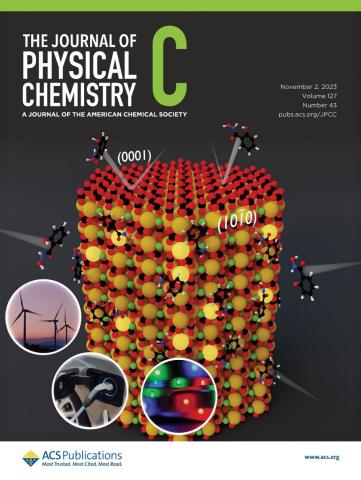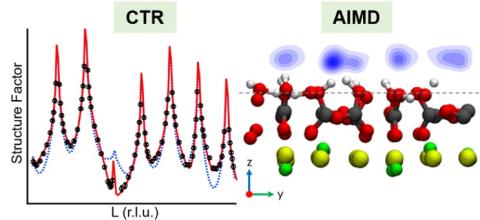
CMI researchers from the Oak Ridge National Laboratory conducted the activity for this highlight
Innovation
Clarified the interfacial structure of bastnäsite-(001) through a synergistic approach of surface-sensitive spectroscopy and ab initio molecular dynamics calculations.
Achievement
- Discovered that the (001) facet is terminated with anionic carbonate groups, instead of rare-earth cations and fluoride ions.
- Resolved the extent of reconstruction that occurs at the (001) interface with atomic-scale resolution.
Significance and Impact
- Demonstrated the ability of first-principles calculations to guide the development and optimization of atomic-scale models fit to crystal truncation rod (CTR) data from X-ray diffraction.
- Revealed potential limitations of using anionic collector ligands for beneficiation due to the negatively charged carbonate surface.
Hub Target Addressed
Developing economical methods to enhance recovery of critical materials.
Wanhala, A. K.; Gibson, L. D.; Stubbs, J. E.; Custelcean, R.; Hexel, C.; Eng, P. J.; Bryantsev, V. S.; Stack, A. G. Structure of the Bastnäsite (001) Surface by Crystal Truncation Rod X-Ray Diffraction and Ab Initio Molecular Dynamics: Implications for Separations of a Rare Earth Ore Mineral, The Journal of Physical Chemistry C, DOI: 10.1021/acs.jpcc.3c05905

Right: Water density profile viewed along the (001) surface
